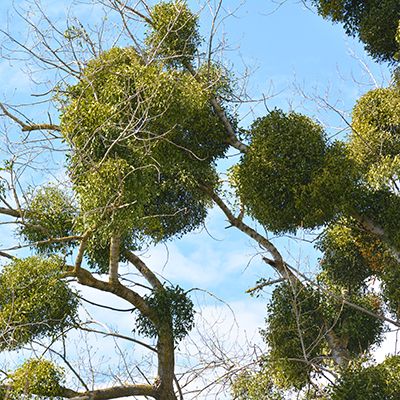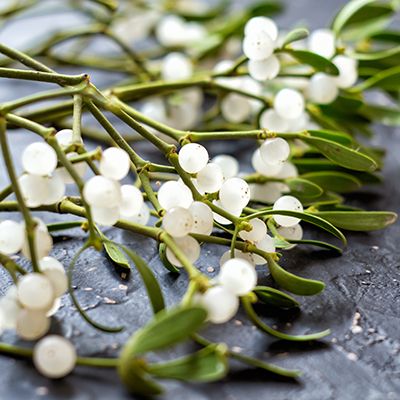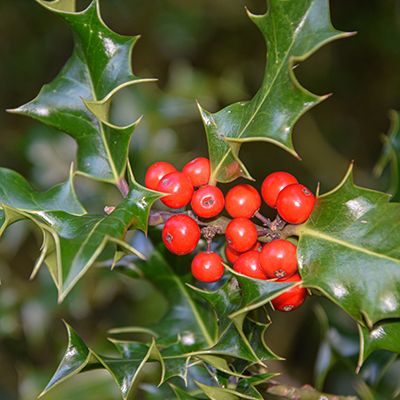


Mistletoe
All parts of mistletoe can be poisonous to humans. However, a mild dilution of mistletoe tea was used by herbalists as a sedative and a heart relaxant. Some birds which are immune to the toxins use the berries as an important food source during the winter.
There are about 1300 species of mistletoe, two of which are native to the Bay Area. One grows only on conifers, the other most commonly in oak trees but has also been found in birch, silver maple, London plane, poplar and a few other deciduous hardwoods. Mistletoe berries are sticky and birds will scrape the berries and seeds off their feet and beaks onto a tree branch after having a berry snack. If all goes well for the mistletoe seed, it sprouts and the root grows into the conducting tubes of the host plant. Mistletoe is a semi-parasite because it does photosynthesize and relies on the host only for water and minerals. Eventually, a large tumor-like growth forms where the mistletoe attaches and blocks the flow of materials to the tips of the branch which then dies. Severe infestations could kill the tree.
The most simple control measure is to cut the branch about 9 to 12 inches toward the trunk from where the mistletoe is attached. Monterey Florel® Brand Growth Regulator also provides good control if it is sprayed on the mistletoe when the tree is dormant.